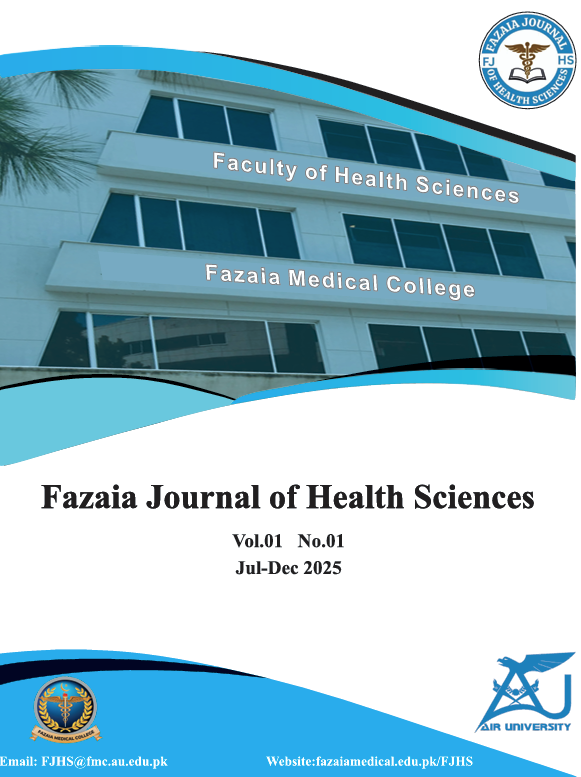PARENTAL KNOWLEDGE, ATTITUDE AND PERCEIVED BARRIERS TO INFANT IMMUNIZATION: AN EPI CENTER BASED CROSS-SECTIONAL SURVEY
Main Article Content
Abstract
OBJECTIVES: This study aimed to assess parental knowledge and attitudes regarding infant immunization, identify barriers to timely vaccination, and evaluate how these challenges influence the parental perspectives at EPI centers at HIT Hospital and THQ Hospital, Taxila.
METHODOLOGY: A cross-sectional survey of 292 parents attending EPI centers at HIT and THQ Hospital, Taxila (March 2024–October 2024) was conducted using convenience sampling. Data was collected via face-to-face interviews using a structured closed ended, validated questionnaire covering demographics, knowledge, attitudes, and immunization barriers. SPSS version 26.0 was used for statistical analysis. Chi-square test was employed to determine the associations between knowledge and attitude and identified barriers to timely immunization.
RESULTS: Majority of participants were mothers 204(69.9%), age between 25-30 years 135(46.2%) and 132(45.2%) had 2-3 children. More than half of the participants 229(78.4%) had completed their child age-specific immunization. Equal proportions of participants 111(38%) demonstrated good knowledge and a Statistics of those having positive attitude positive attitude toward immunization. Lack of awareness 181(53%) and vaccine misconceptions 137(46.9%) were reported as common barriers. Level of knowledge was found to be significantly associated with misconceptions (p=0.02), as well as with long waiting time at EPI centers. long clinic lines (p=0.03). Similarly, parental attitude was significantly linked to misconceptions (p=0.006) and clinic wait times (p=0.01).
CONCLUSION: The findings indicate that misconceptions about vaccines and logistical issues, such as long wait times, significantly impact parental knowledge and attitudes, potentially leading to delays in infant immunization. Targeted education and training healthcare professionals to communicate immunization benefits are essential to improve perceptions and increase coverage.
Article Details
Section

This work is licensed under a Creative Commons Attribution-NonCommercial 4.0 International License.
Copyright and Licensing:
All articles published in FJHS are licensed under the Creative Commons Attribution-NonCommercial 4.0 International License (CC BY-NC 4.0). This license permits use, distribution, and reproduction in any medium, provided that the original work is properly cited and used for non-commercial purposes only.
For more details, please visit: https://creativecommons.org/licenses/by-nc/4.0/

